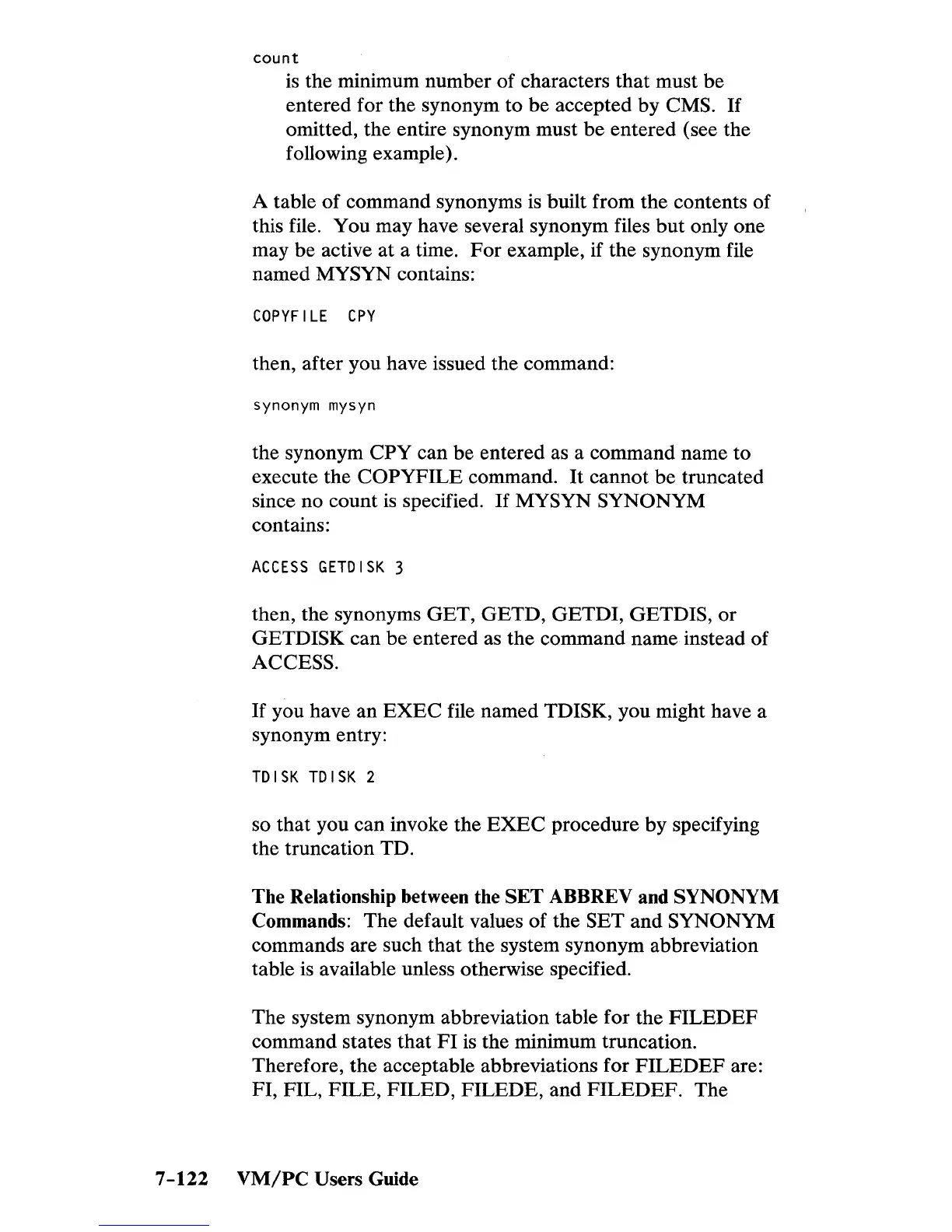count
is
the minimum number of characters that must be
entered for the synonym to be accepted by CMS.
If
omitted, the entire synonym must
be
entered (see the
following example).
A table
of
command synonyms
is
built from the contents of
this file. You may have several synonym files
but
only one
may be active
at
a time.
For
example, if the synonym file
named MYSYN contains:
COPYFILE
CPY
then, after you have issued the command:
synonym mysyn
the synonym CPY can be entered as a command name to
execute the
COPYFILE command.
It
cannot be truncated
since no count
is
specified.
If
MYSYN SYNONYM
contains:
ACCESS
GETDISK
3
then, the synonyms GET, GETD, GETDI, GETDIS,
or
GETDISK can be entered as the command name instead of
ACCESS.
If
you have an
EXEC
file named TDISK, you might have a
synonym entry:
TDISK
TDISK
2
so that you can invoke the
EXEC
procedure by specifying
the truncation TD.
The Relationship between the
SET
ABBREV and SYNONYM
Commands: The default values of the SET
and
SYNONYM
commands are such that the system synonym abbreviation
table
is
available unless otherwise specified.
The system synonym abbreviation table for the
FILEDEF
command states
that
FI
is
the minimum truncation.
Therefore, the acceptable abbreviations for
FILEDEF
are:
FI, FIL,
FILE,
FILED, FILEDE, and
FILEDEF.
The
7-122
VM/PC
Users Guide

